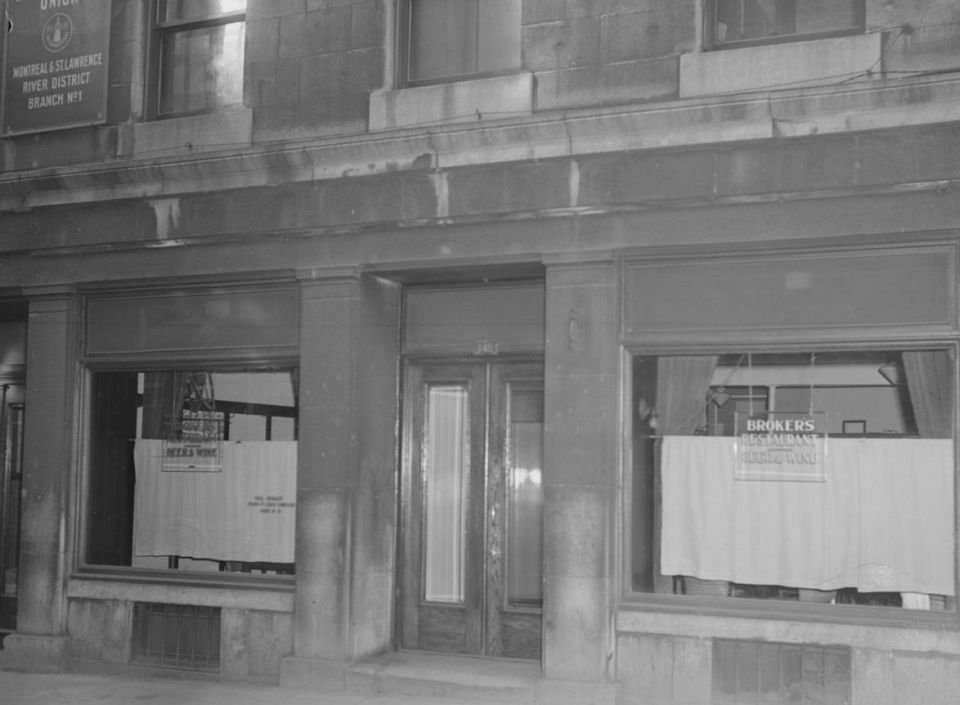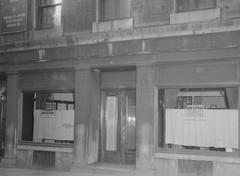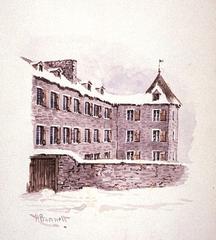
Rue Saint-François-Xavier Montreal: Visiting Hours, Tickets, and Historical Sites Guide
Date: 15/06/2025
Introduction
Rue Saint-François-Xavier, located in the heart of Old Montreal, is a living testament to the city’s layered history and vibrant present. Lined with cobblestones and stately heritage buildings, this street traces Montreal’s transformation from its 17th-century colonial origins to a modern, cosmopolitan city. Whether you’re a history enthusiast, architecture lover, or simply seeking authentic local culture, this guide provides practical information on visiting hours, ticketing, accessibility, and key attractions along Rue Saint-François-Xavier.
For further details on planning your visit, consult trusted resources like Vieux-Montréal, Walk Montreal, and Nomadic Matt.
Table of Contents
- Introduction
- Historical Overview
- Navigating Rue Saint-François-Xavier: Ambience and Experience
- Architectural and Cultural Significance
- Key Sights, Attractions, and Guided Tours
- Visiting Hours and Ticket Information
- Accessibility and Getting There
- Practical Visitor Tips
- Dining, Accommodation, and Services
- Seasonal Events and Activities
- Frequently Asked Questions (FAQ)
- Summary and Final Recommendations
- References
Historical Overview
Origins and Urban Development
Rue Saint-François-Xavier was established in 1678 as part of the early urban layout designed by Sulpician priest François Dollier de Casson. Initially called “Rue Saint-François,” the street played a pivotal role in connecting the Saint-Pierre River to Rue Notre-Dame, serving as a vital north-south axis for the growing settlement (Toponymie Québec; Vieux-Montréal).
Name and Religious Significance
In the 18th century, the street was renamed to honor the Jesuit missionary Saint Francis Xavier, reflecting the deep religious roots of Montreal’s early urban identity (Toponymie Québec).
Evolution and Heritage
Rue Saint-François-Xavier’s built environment reflects Montreal’s colonial past and subsequent growth. Its proximity to Place d’Armes, Place Royale, and the Old Port situates it at the center of the city’s historic commercial and civic life (walkmontreal.com). Over the centuries, the street expanded and adapted, with many heritage buildings preserved and repurposed for contemporary uses.
Navigating Rue Saint-François-Xavier: Ambience and Experience
Unlike the vibrant, tourist-heavy Rue Saint-Paul, Rue Saint-François-Xavier offers a quieter, more intimate exploration of Old Montreal. The original cobblestone paving, narrow width, and preserved architecture create a distinctly European feel. Early mornings and late afternoons are ideal for leisurely strolls and photography, capturing the interplay of natural light on stone facades (grandquebec.com).
The street is pedestrian-friendly, with minimal traffic and a welcoming atmosphere that invites visitors to pause at boutique shops, galleries, and cafes.
Architectural and Cultural Significance
Architectural Diversity
Rue Saint-François-Xavier features a rich variety of architectural styles:
- Centaur Theatre / Former Montreal Stock Exchange (453 Rue Saint-François-Xavier): Built in 1903 in the Beaux-Arts style, this National Historic Site now hosts English-language theatre (walkmontreal.com).
- Fairy Land Building (480 Rue Saint-François-Xavier): An example of Second Empire architecture, notable for its mansard roof and ornate stonework.
- Greystone Residences: Many buildings feature locally quarried limestone, wrought-iron balconies, and S-iron anchor plates.
Adaptive Reuse
Historic structures have been carefully repurposed: banks and warehouses now house theatres, hotels, and restaurants, maintaining the street’s heritage while enriching its cultural landscape (Bureaux 360).
Cultural Life
The Centaur Theatre stands out as a hub for the performing arts, while the street’s ambiance has inspired artists, writers, and photographers. Its central location historically linked Montreal’s commercial and financial sectors, a legacy reflected in the area’s ongoing economic vitality (walkmontreal.com).
Key Sights, Attractions, and Guided Tours
- Centaur Theatre: Visit to catch a show or explore the historic former Stock Exchange building. Tickets are available on the theatre’s website.
- Notre-Dame Basilica: A short walk away, offering guided tours and immersive light shows (oldmontreal.guide).
- Pointe-à-Callière Museum: Showcasing the city’s archaeological and historical heritage.
- Guided Walking Tours: Several companies offer thematic tours covering history, architecture, and folklore, often departing from or passing through Rue Saint-François-Xavier (Fantômes Montréal).
- Boutique Shops and Galleries: Artisans, fashion, and local crafts add to the vibrant street life.
Visiting Hours and Ticket Information
- Street Access: Rue Saint-François-Xavier is open to the public 24/7, year-round.
- Shops and Restaurants: Generally open from 10:00 AM to 6:00 PM, with some bars and eateries extending into the evening.
- Attractions:
- Notre-Dame Basilica: 9:00 AM–5:00 PM (extended hours for special events).
- Pointe-à-Callière Museum: 10:00 AM–5:00 PM.
- Tickets: No fee to explore the street. Museums and theatres require tickets, which can be purchased in advance or at the venue. Guided tours typically range from CAD 20–40 per person (Nomadic Matt).
Accessibility and Getting There
- Public Transit: Place-d’Armes metro station (Orange Line) is a 7-8 minute walk away; multiple bus lines also serve the area (Walk Score).
- Parking: Limited street parking and public lots nearby, but spaces fill quickly, especially in summer. Public transit or cycling is recommended (MTL.org).
- Accessibility: Cobblestone surfaces may challenge those with mobility impairments. Many museums, restaurants, and hotels have improved accessibility—contact venues directly for details.
Practical Visitor Tips
- Best Times to Visit: Early mornings and weekdays offer a quieter experience. Late afternoon and evenings are lively, especially during festival seasons.
- Weather: Dress for the season—summers can be hot, winters cold and snowy. Bring comfortable shoes for walking on cobblestones.
- Language: French is the official language, but English is widely spoken. Polite greetings (“Bonjour”) are appreciated.
- Safety: Old Montreal is safe and well-patrolled, but standard urban precautions apply.
Dining, Accommodation, and Services
- Dining: From creative Quebecois cuisine at Garde Manger to tapas at Santos and classic fare at Gibby’s, Rue Saint-François-Xavier offers diverse options (roaminghistorian.com).
- Accommodation: Boutique hotels such as Hôtel Épik Montréal and Le Petit Hôtel & Café offer comfortable stays in historic settings (mapliv.com).
- Services: Public restrooms are available at major attractions. Free Wi-Fi is accessible in many cafes and museums. Pharmacies and health facilities are nearby.
Seasonal Events and Activities
- Summer: Festivals and outdoor markets enliven the area, with extended terrace hours and pop-up events (MTL.org).
- Autumn: Enjoy fall colors and a relaxed pace.
- Winter: Streets are adorned with festive lights; bundle up for magical strolls.
- Guided Tours: Specialty tours—history, architecture, food, and even ghost stories—are popular throughout the year (Fantômes Montréal).
Frequently Asked Questions (FAQ)
Q: What are the visiting hours for Rue Saint-François-Xavier?
A: The street is accessible 24/7. Shops and attractions generally operate between 10:00 AM and 6:00 PM; check individual websites for details.
Q: Is there an entrance fee?
A: No, the street is free to explore. Admission fees apply for museums, theatres, and guided tours.
Q: Are guided tours available?
A: Yes, multiple companies offer tours covering history, architecture, and local legends.
Q: How accessible is the street for those with disabilities?
A: Cobblestones may pose challenges, but several venues have improved accessibility. Contact ahead for specific needs.
Q: How do I get there using public transit?
A: The nearest metro station is Place-d’Armes, about a 7-minute walk away.
Summary and Final Recommendations
Rue Saint-François-Xavier stands as a harmonious blend of Montreal’s historic legacy and vibrant modern culture. Its preserved architecture, central location, and dynamic mix of attractions make it a quintessential Old Montreal destination. Plan your visit by checking venue hours and booking tickets in advance for popular sites and tours. Early mornings provide tranquility, while evenings capture the district’s lively spirit. For an enhanced experience, utilize the Audiala app for guided tours and up-to-date event information.
Embrace the timeless charm and modern energy of Rue Saint-François-Xavier, where the city’s past and present meet in seamless harmony.
References
- Vieux-Montréal
- Walk Montreal
- Nomadic Matt
- Old Montreal Guide
- MTL.org
- Fantômes Montréal
- Toponymie Québec
- roaminghistorian.com
- grandquebec.com
- thegeographicalcure.com
- mapliv.com
- Time Out Montreal





























































































































